Oaxaca: A Technicolor Daydream
Culture — 26.09.23
Words and Photos: Ivory Campbell
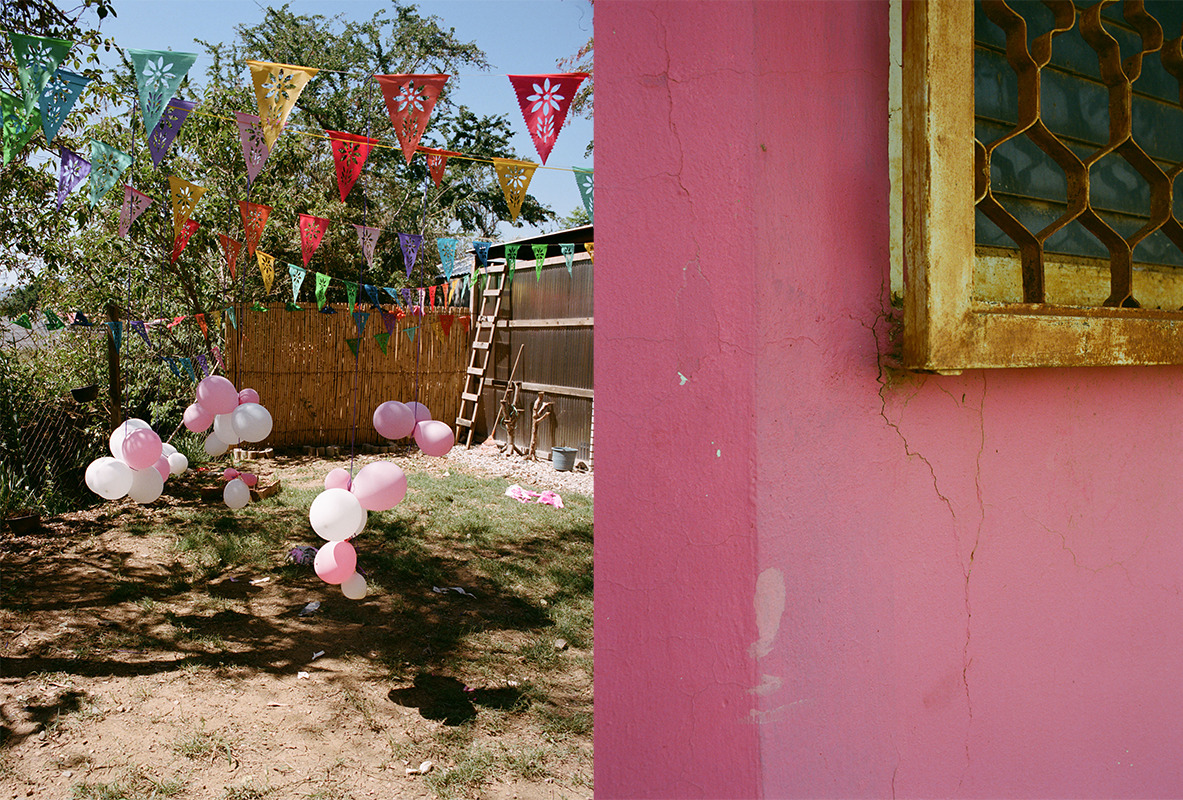 Oaxaca is known for many things. It’s one of the most diverse states in Mexico, home to some of the best food and mezcal in the country, with stunning natural landscapes and vibrant markets. But what stood out to me most and was strangely never mentioned was the way Oaxaca made you feel like a child again. Granted, you could argue that that’s the magic of traveling; it opens you up to other worlds and widens your eyes like a baby seeing the sky for the first time. But for me, this felt like a return to childhood—a playground for the senses. Walking down the roads and backstreets felt reminiscent of an elaborate children’s party. Decorations were everywhere you turned, with paper bunting hanging above each street, piñatas in different shapes and sizes dropping from ceilings, and slowly deflating balloons pinned to the walls and doors of houses. The unapologetic presence of color, from hot pink and lime green buildings to stickers, posters, and paintings plastered over each wall, was a far cry from the grey and slightly mundane hues of home. This was a place that celebrated each day, a place that rebelled against stillness. It served as a reminder that we can exist and move through technicolor days. Nothing about Oaxaca was suggestive of being real, but here we were.
Oaxaca is known for many things. It’s one of the most diverse states in Mexico, home to some of the best food and mezcal in the country, with stunning natural landscapes and vibrant markets. But what stood out to me most and was strangely never mentioned was the way Oaxaca made you feel like a child again. Granted, you could argue that that’s the magic of traveling; it opens you up to other worlds and widens your eyes like a baby seeing the sky for the first time. But for me, this felt like a return to childhood—a playground for the senses. Walking down the roads and backstreets felt reminiscent of an elaborate children’s party. Decorations were everywhere you turned, with paper bunting hanging above each street, piñatas in different shapes and sizes dropping from ceilings, and slowly deflating balloons pinned to the walls and doors of houses. The unapologetic presence of color, from hot pink and lime green buildings to stickers, posters, and paintings plastered over each wall, was a far cry from the grey and slightly mundane hues of home. This was a place that celebrated each day, a place that rebelled against stillness. It served as a reminder that we can exist and move through technicolor days. Nothing about Oaxaca was suggestive of being real, but here we were.
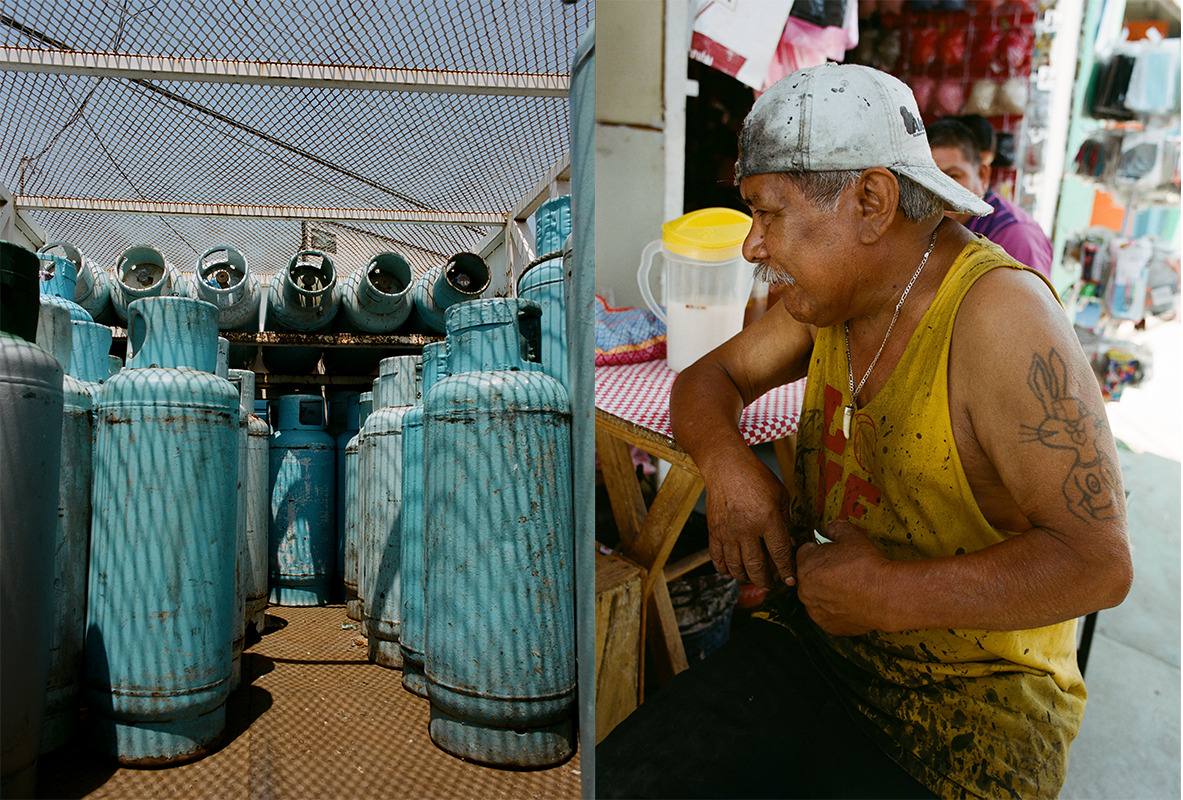
In comparison to the visual noise, the streets were calm, with small scenes dotted around the pavements. Men at work, contently getting on with the day’s task, ranged from sweeping dust and dirt left behind by passing vehicles to loading empty blue water dispensers onto the back of yellow carts. The list of jobs was endless, and no matter how monotonous or ordinary these tasks were, they were carried out with heart and flair. Men were simply getting on with it. These scenes all worked in tandem, with every man seemingly having a particular job that was different from the others. Coming from a place like London, where the majority of the population hides away each day behind closed doors and glaring screens, it was refreshing to see these men proudly bearing their occupations for all to see.
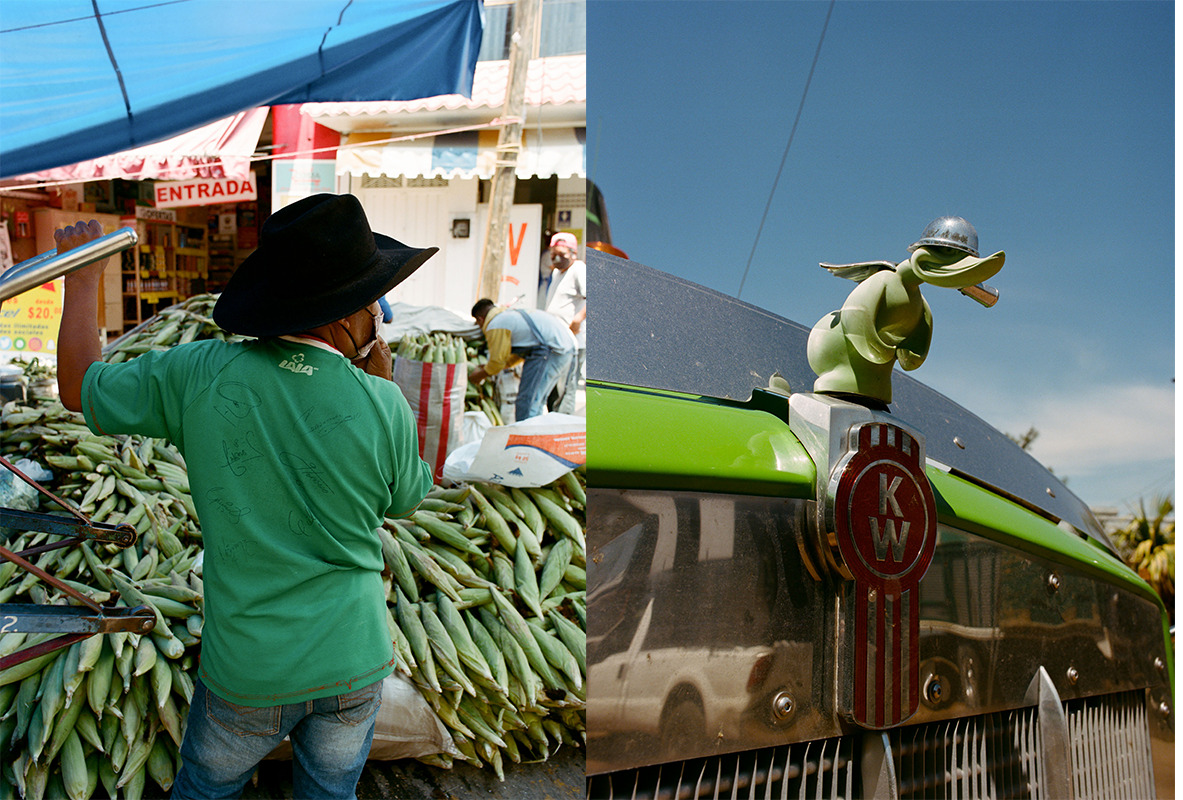
Central de Abastos de Oaxaca is a market that is usually open each day, year-round, from the early morning until the evening. Although well renowned for its produce and pottery, Abastos Market also has an abundance of food vendors who prepare traditional Oaxacan dishes on the spot. Queso-filled quesadillas in blue corn tortillas; pumpkin flower with fresh green salsa; mole with rice; tlyudas; and tamales—to put it simply, there was no shortage of options. The first time I tried authentic Mexican food, I sat at a large, open table on the market’s outskirts. Eating was about sharing the experience; from the size of the portions to the seating arrangements, hungry customers were encouraged to enjoy their meal in the company of others. I sat opposite an older man in a salmon pink shirt, wearing a cream-colored sombrero with black leather details and silver studs. He had a perfectly kept mustache with a parting in the middle, and he was peacefully tucking into some fresh fish and a bowl of broth. You see, everything here is beautifully flamboyant; nothing is done half-heartedly or without thought and consideration. The culture here is ingrained in each detail; each color, moment, and sound tells a story. I ordered the mole; it came on a beige plastic plate, almost overflowing. Rice, frijoles, and a dark, thick sauce swam around the dish, with an old-fashioned silver spoon emerging from the midst. This mole, although muted in tone and presentation, packed the most intense flavor—sweet and salty, heat but not spicy—it was the kind of dish that let me know exactly where I was.
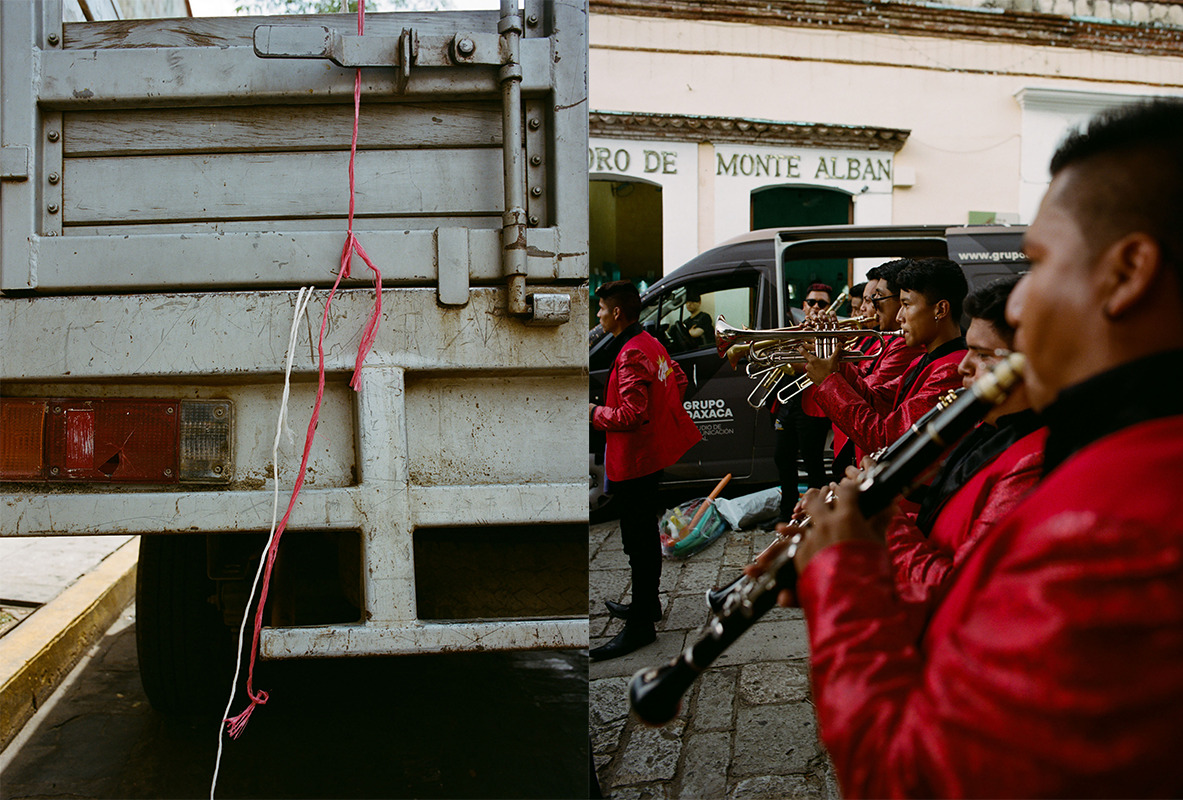
Oaxaca Centro always seemed to be celebrating something each time we found ourselves there. One cloudy afternoon, just before it rained outside of the Santo Domingo Cathedral, the pavements were filled with 20-foot-tall puppets held by enthusiastic young boys. People gathered clutching long balloons that waved through the air while a live band played in red sequin blazers. A sense of community and joy permeated through the parade, with people of all ages and backgrounds coming together to sing and dance in the square.
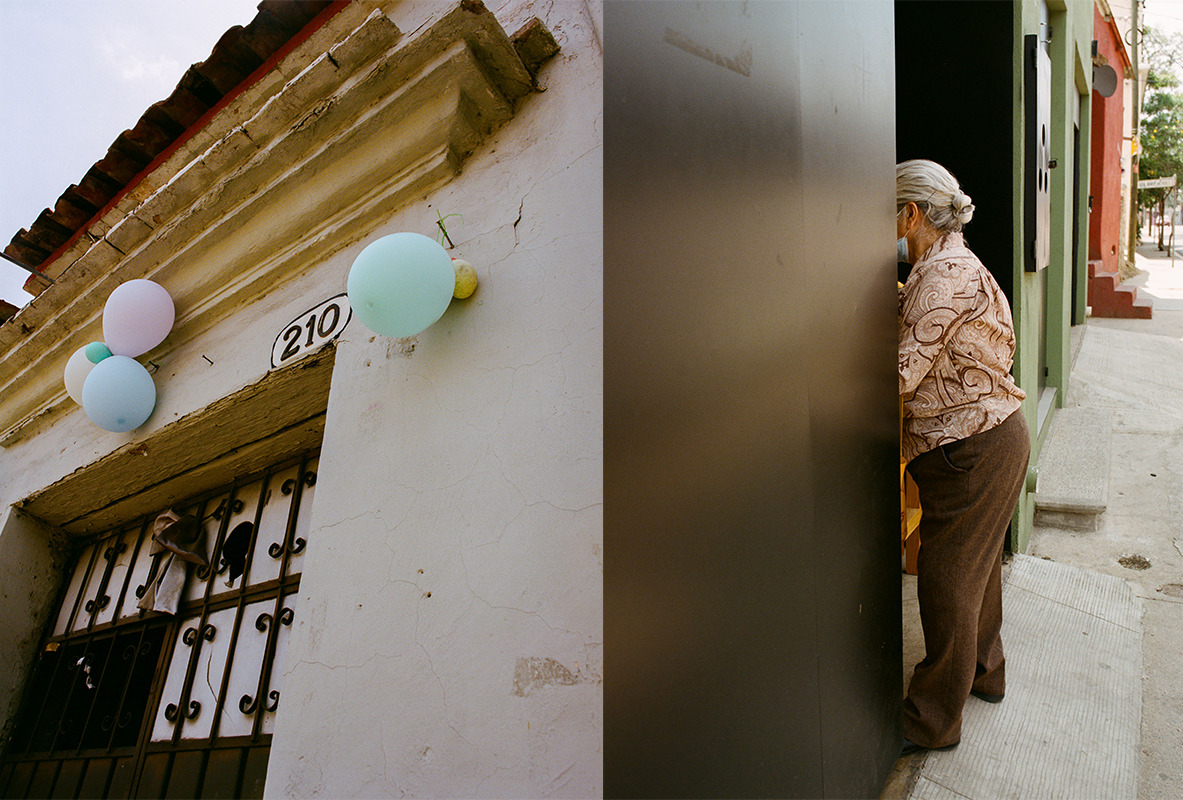
Two days before I left for Mexico, I was shown the song “Mexico Dream” by Piero Piccioni. A song that feels like a fantastical, spiritual trip into a colorful realm of possibilities. This song would become the soundtrack to my time away, for this was a place that left its mark, that presented itself as a dream-like space where flavors, residents, and objects were as vivid and whimsical as they feel in those inconceivable places you go to in your sleep. Like a dream before your eyes open and let in the light, Oaxaca teetered between the laws of fantasy and reality and was an unforgettable place I wish I never had to wake from.